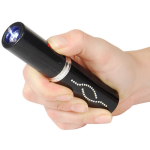Powerful Protection from TBOTECH
Stay safe with stun guns and Tasers from TBOTECH. Our range includes compact stun guns, stun batons, premium Taser devices, and more—perfect for self-defense in any situation. With fast shipping and 20+ years of trust, we’ve got affordable, reliable options for you. Browse below!
Why Choose Us? 90-Day Money-Back Guarantee | Free Shipping Over $50 | Top Quality Merchandise








